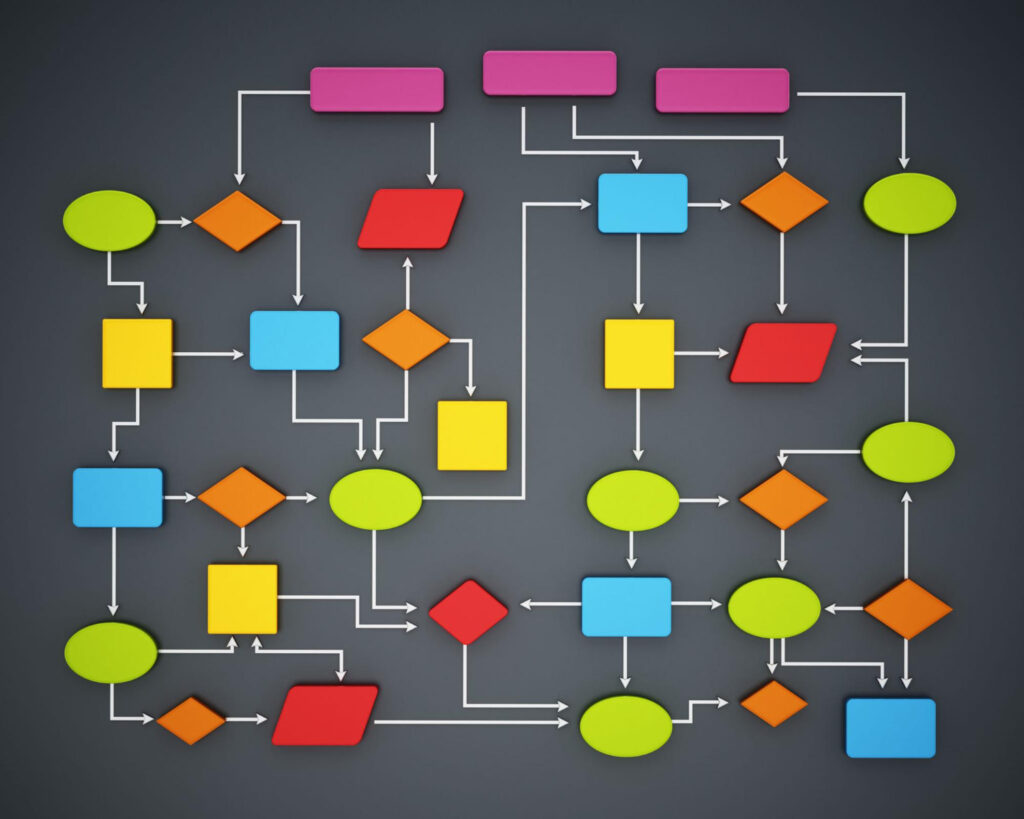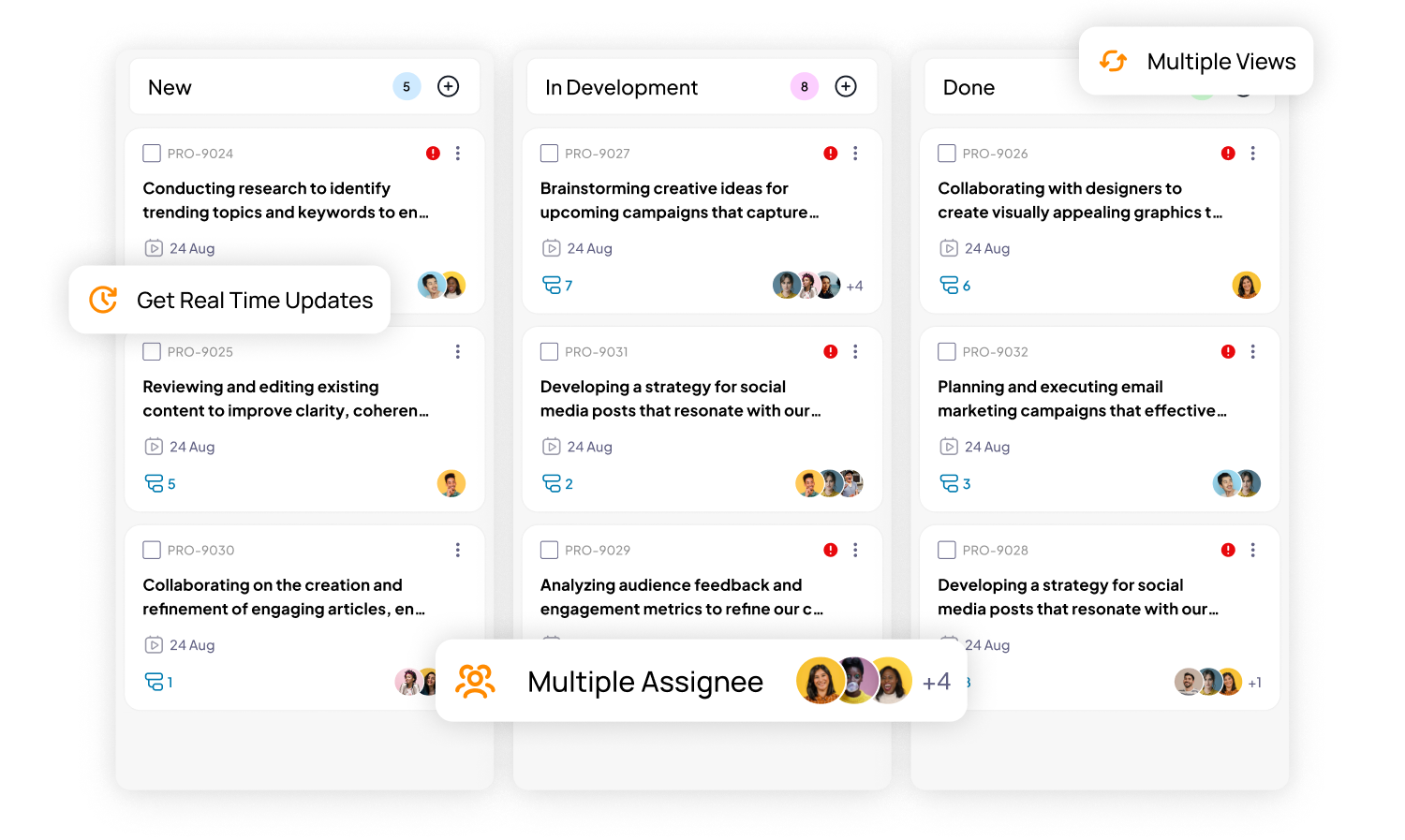Project managers today juggle nothing short of 50 circus balls at once. One single project holds multiple action points including ideation, planning, execution, monitoring, and control. The information overload that comes with it can oftentimes be overwhelming.
For such cases, mind mapping your project is the way to go. The process of mind mapping can help project managers identify roadblocks, mitigate risks, and solve complex issues on time. This guide explores what mind mapping is and top tips to get the most out of this process.
What is Mind Mapping?
Mind mapping, in the simplest terms, is a way to break down complex processes into actionable and digestible chunks. We start with a core idea in the center, which then branches out to subtopics related to it.
Do you remember drawing information maps as a kid using different colors and shapes? Well, those were mind maps! And the idea at the heart of it has not changed. Project mind maps are simply adapted to a project-specific context, making it easy to gather every piece of information important to you. For PMs, it might look something like this:
Mind maps typically revolve around three main components:
- Central Idea
- Main Branches
- Details
There can be multiple components depending on the requirements of the manager and how they visualize information, but these three modules are used most often.
Why Should I Use Mind Maps?
Imagine this, if I say pizza, what will your brain think? Probably a picture of a piping hot pizza, straight out of the oven with melty cheese and tempting red sauce. Right?
Why does this happen? Because imagination and sensory association are two main pillars on which the human brain works. People are naturally visual learners. The sooner we accept and adapt to how our brain wants information, the better our chances of retaining information and maximizing our productivity.
Information, when presented in a hierarchal and linear way, can become overwhelming to consume. Which can in turn cause distress. We are in an era where simply having knowledge is not sufficient. Knowing how to manage knowledge and extract it at the right time is important. This phenomenon marks our shift from the information age towards the intelligence age.
How To Use Mind Maps Effectively?
Mind maps are not a fancy way to present information. They are rather a way to strategically align vision with action. Here’s how project managers and team leads can use this strategy:
- Simplify the scope of a project
- Solve complex problems
- Connect vertical processes effectively
- Brainstorm with ease and find creative solutions
- Dig deep into ideas without writing paragraphs of information
Now that we know how useful mind maps can be, let’s look at some techniques to get the most out of your mind mapping process:
1. Planning via Association
It may be easy to make associations within the main branches of a mind map and its details. However, creating links among details in different branches is a must to get a cohesive understanding of your plan. By doing this, you will also be able to understand gaps in your process and fulfill requirements before risks escalate.

For instance, it is easy to make an association between different tasks within the Product Pricing Techniques branch in the above-given image. But creating links between growth (in Product Phase) and growing rate (in Product Pricing Technique) to determine your market value will give you a complete strategy.
2. Add Creativity to the Mix
Presenting data creatively might not be your priority, but it can boost your team’s information retention rate. As we mentioned earlier, the human mind retains information presented in a deconstructed, non-linear, and scannable manner. Separating branches by colors, and adding images or other media can also highlight important information and increase retention rate.

3. Dig Deep Consistently
It is no surprise now that mind maps are a very effective way to organize information. Then why does it not work for some people? Because users do not go beyond the surface-level tasks.
To get the most out of your mind maps, you need to dig deep. Explore all verticals in as much depth as possible and break them down into their very singular component. This is especially useful when dealing with a huge project scope.
Mind maps help you understand your next action in digestible chunks without losing sight of the big picture. This ensures that you do not divert from the main goal and still make significant progress each day, no matter your vertical.
Conclusion
Project managers are required to bring forth unique solutions and they need to find them fast. Creating a mind map is one of the first things a project manager should do when thinking about project execution. They can be an excellent way to declutter your thoughts and create a tracking system that ensures you find solutions while keeping all the touchpoints in consideration.
Join us for free and transform your work life today! See 5day.io in Action.








